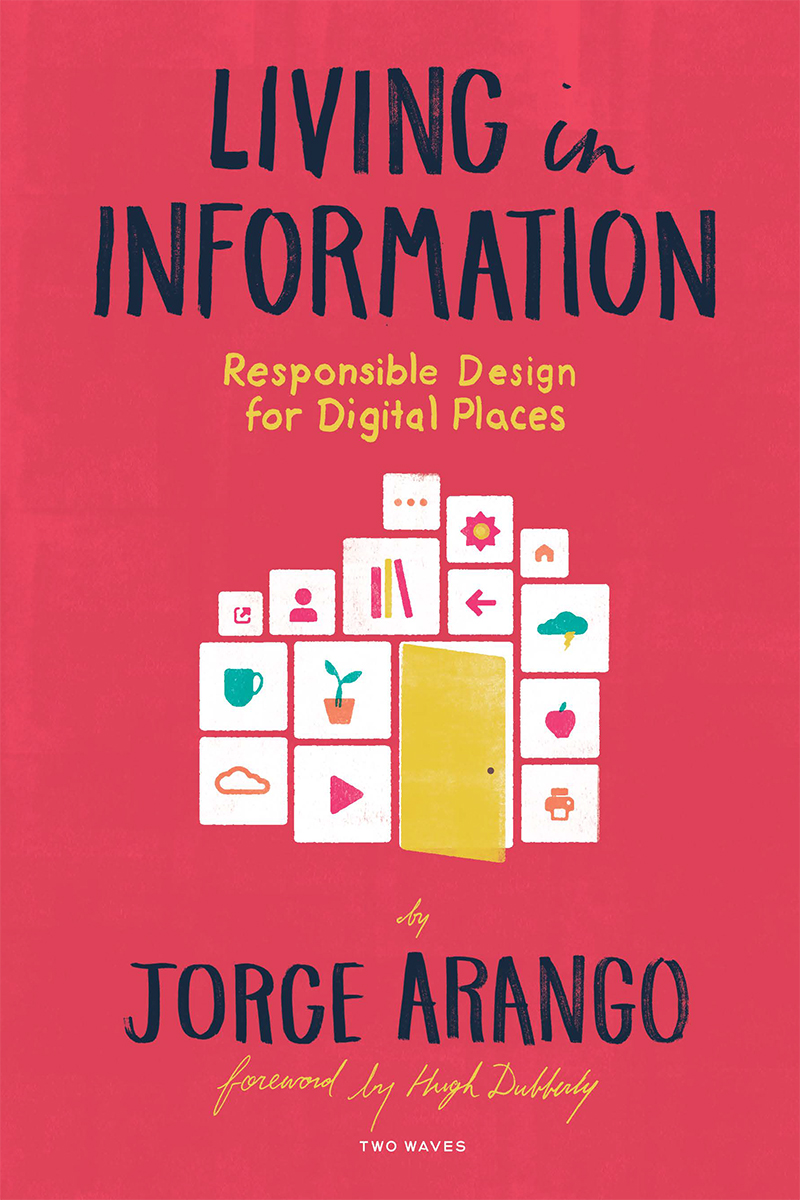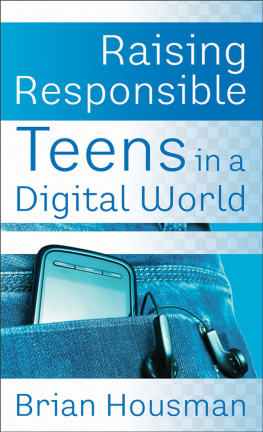Jorge Arango - Living in Information: Responsible Design for Digital Places
Here you can read online Jorge Arango - Living in Information: Responsible Design for Digital Places full text of the book (entire story) in english for free. Download pdf and epub, get meaning, cover and reviews about this ebook. year: 2018, publisher: Rosenfeld Media, genre: Romance novel. Description of the work, (preface) as well as reviews are available. Best literature library LitArk.com created for fans of good reading and offers a wide selection of genres:
Romance novel
Science fiction
Adventure
Detective
Science
History
Home and family
Prose
Art
Politics
Computer
Non-fiction
Religion
Business
Children
Humor
Choose a favorite category and find really read worthwhile books. Enjoy immersion in the world of imagination, feel the emotions of the characters or learn something new for yourself, make an fascinating discovery.

- Book:Living in Information: Responsible Design for Digital Places
- Author:
- Publisher:Rosenfeld Media
- Genre:
- Year:2018
- Rating:3 / 5
- Favourites:Add to favourites
- Your mark:
- 60
- 1
- 2
- 3
- 4
- 5
Living in Information: Responsible Design for Digital Places: summary, description and annotation
We offer to read an annotation, description, summary or preface (depends on what the author of the book "Living in Information: Responsible Design for Digital Places" wrote himself). If you haven't found the necessary information about the book — write in the comments, we will try to find it.
Jorge Arango: author's other books
Who wrote Living in Information: Responsible Design for Digital Places? Find out the surname, the name of the author of the book and a list of all author's works by series.
Living in Information: Responsible Design for Digital Places — read online for free the complete book (whole text) full work
Below is the text of the book, divided by pages. System saving the place of the last page read, allows you to conveniently read the book "Living in Information: Responsible Design for Digital Places" online for free, without having to search again every time where you left off. Put a bookmark, and you can go to the page where you finished reading at any time.
Font size:
Interval:
Bookmark:

Responsible Design for Digital Places
by
JORGE ARANGO
Foreword by Hugh Dubberly

TWO WAVES BOOKS
BROOKLYN, NY, USA
Living in Information
Responsible Design for Digital Places
By Jorge Arango
Two Waves Books
an Imprint of Rosenfeld Media, LLC
540 President Street
Brooklyn, New York
11215 USA
On the Web: twowavesbooks.com
Please send errors to:
Publisher: Louis Rosenfeld
Managing Editor: Marta Justak
Interior Layout Tech: Danielle Foster
Cover and Interior Design: The Heads of State
Indexer: Marilyn Augst
Proofreader: Sue Boshers
2018 Jorge Arango
All Rights Reserved
ISBN: 1-933820-65-9
ISBN-13: 978-1-933820-65-1
LCCN: 2017958794
Printed and bound in the United States of America
For Boisie, who introduced me to information environments. I wish he could have experienced this one.
We are in the midst of a major social transformationmoving many of our day-to-day activities from physical places to information-based places that we experience on our phones and computers. The central question of this book is: How can we design these information environments so they serve our social needs in the long term?
The form and structure of our environments shape our interactions with each other and with our social institutions. For most of our history, weve operated within physical environments. But now we are also inhabiting environments that are made of information.
Our relationship with our environments establishes contexts that influence our thinking and behavior. Our awareness of where we are and what we can do there is informed by affordances and signifiers in the environment.
The form and structure of our environments have not emerged arbitrarily; instead, they have developed over time to help us fulfill particular needs. These needs are driven by incentives that influence both design constraints and intended user behaviors.
The business model that drives todays most popular information environments incentivizes users to pay attention to the environment itself instead of each other. This leads to social dysfunction.
In addition to business incentives, technology also influences the form and structure of our environments. Virtual and augmented reality, artificial intelligence, voice-based user interfaces, and the blockchain are five current technologies that promise to change the structure of our environments and how we experience them.
We can intentionally design our environments to better serve our needs. Architecture is the design discipline that is focused on structuring our physical environments, and information architecture is the design discipline that does the same for information environments.
Architects define the conceptual structure of our environments, which is perhaps the single most important factor in how we experience them. In information environments, these structures manifest as labeling and navigation systems that impose distinctions between parts of the environment.
Environments are not just structural constructs; many other systems must work in concert to make it possible for them to serve our needs. Architects must consider how these systems work together.
These systems are constantly changing. Architects must vie to make them evolve in ways that dont compromise their integrity or usefulness in the long-term. Some parts of the environment evolve more slowly than others; long-lasting environments establish structural distinctions that generate social, economic, and ecological value.
Ultimately, creating environments that support our needs in the long term requires that we relinquish top-down control in favor of a more generative approach. Such an approach encourages emergence and continual evolution while preserving integrity and generating value.
Designing has its roots in craftin making things, in giving them form. And at one level, designing is concerned with how things looktheir shape, color, and material. Yet, while good form is important, form is not the only concern in designing. Designers are coming to realize that things are enmeshed in networksgathered together in systemsbiological systems, systems of goods and trade, information systems, social systems, systems of technology, and more. And increasingly, designers are recognizing that we are designing within systems.
Recognizing that design has several dimensions has a long history.
Roman architect Vitruvius described three principles: durability, convenience, and beauty. The International Standards Organization (ISO) echoes Vitruvius, mandating software that is effective, efficient, and engaging. Architect Louis Sullivan proclaimed, form ever follows functionwhile Frog founder and Apple product designer Hartmut Esslinger quipped, form follows emotion.
Apple co-founder Steve Jobs, who hired Frog early, noted, In most peoples vocabularies, design means veneer. Its interior decorating. Its the fabric of the curtains and the sofa. But to me, nothing could be further from the meaning of design. Design is the fundamental soul of a man-made creation that ends up expressing itself in successive outer layers of the product or service.
Jay Doblin, co-founder (with Massimo Vignelli) of Unimark International, one of the first corporate identity firms, described the form and function dimensions in terms of appearance and performance. Doblin proposed a 2 x 3 matrix of six types of design with appearance and performance on the Y axis and products, unisystems, and multisystems on the X axis. Doblin describes products as tangible objects and messages; unisystems as sets of coordinated products and the people who operate them; and multisystems as competing unisystems.
Richard Buchanan, who has a PhD in rhetoric from the University of Chicago, for many years headed CMUs design school, and now teaches in the business school at Case-Western, has proposed a similar framework of four spaces or orders of design: communications (a focus on meaning and symbols); artifacts (a focus on form and things); interactions (a focus on behavior and action); and fourth order (a focus on environments and systems in which all other orders exist).
Michael Porter, who teaches at Harvard Business School, has written about how smart, connected products are transforming competition and redefining industry boundaries. Porter described a similar framework with five-phases: 1) products, which become 2) smart products, which become 3) smart-connected products, which join 4) product systems, which join 5) systems of systems. Increasingly, value comes from adding intelligence to productsmicroprocessors, software, and sensors. Further value comes from connecting products to cloud-based processing, networked applications, and human serviceswhat CMU HCII head Jodi Forlizzi calls product-service systems or product-service ecologies. Examples might be Apples iPhoneiTunesApp Store ecology or similar ecologies offered by Amazon, Facebook, Google, Microsoft, and others.
John Maeda, former President of Rhode Island School of Design (RISD), has offered a sort of era analysis, suggesting design practice has evolved in three stages: 1) classic design (perfect, crafted, and complete), 2) design thinking (innovation... experience... empathy), 3) computational design (design for billions of individual people and in real time is at scale and TBD). Design thinking clearly has roots in systems thinking, as does computational design (e.g., artificial intelligence, machine learning, deep learning, natural language processing, computer vision, etc.).
Font size:
Interval:
Bookmark:
Similar books «Living in Information: Responsible Design for Digital Places»
Look at similar books to Living in Information: Responsible Design for Digital Places. We have selected literature similar in name and meaning in the hope of providing readers with more options to find new, interesting, not yet read works.
Discussion, reviews of the book Living in Information: Responsible Design for Digital Places and just readers' own opinions. Leave your comments, write what you think about the work, its meaning or the main characters. Specify what exactly you liked and what you didn't like, and why you think so.









